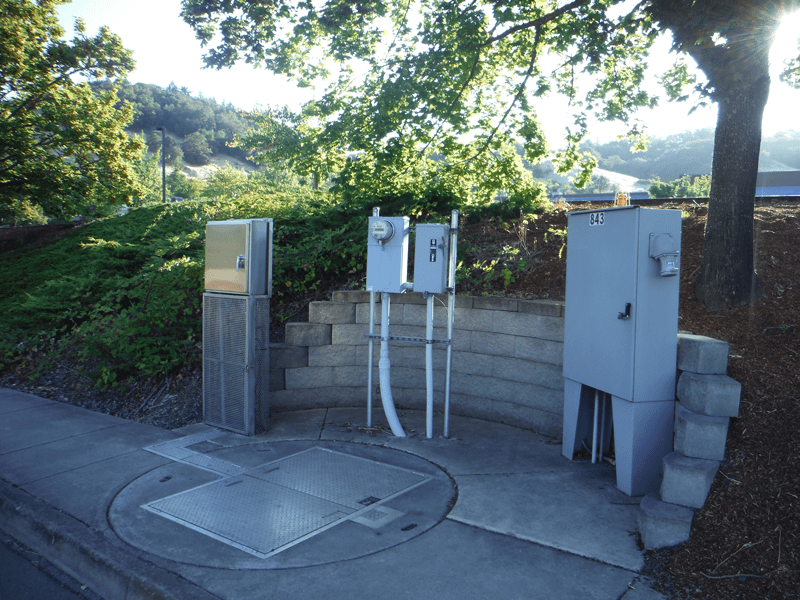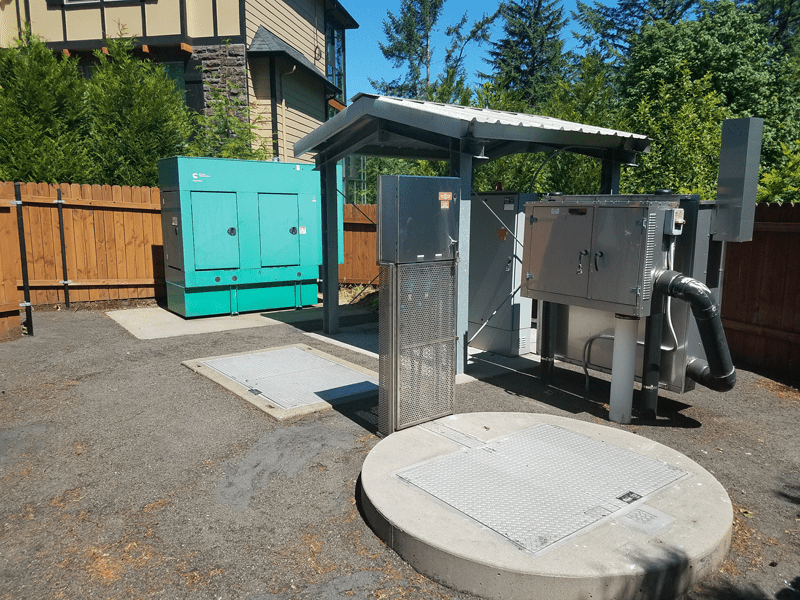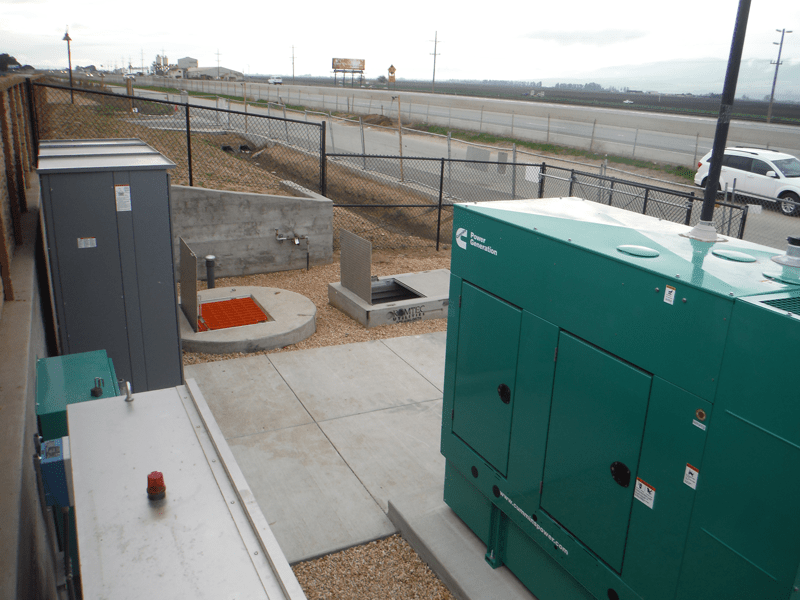
Romtec Utilities designs pump stations that include all structural, mechanical, electrical, and communications systems in a single package. Each pump station design is engineered to meet the specific site conditions and requirements of the unique project. In some cases, the site conditions are not ideal for the installation and operation of a pump station. One issue that is occasionally experienced is when the site for the pump station only has single phase power available.

When single phase utility power is the only available power source for small, sanitary sewer lift stations, typically with flows under 100 gpm, there are different approaches that drastically affect the design potential and functionality of the system. The best option is bringing in 3 phase power and using 3 phase pumps. This approach provides the best solution in terms of pump selection and lift station design. The next approach is converting single phase power to 3 phase power and using 3 phase pumps. This approach provides a great lift station design, but includes the design and equipment cost for power conversion. The last option is using single phase power with single phase pumps. This approach is cheap, but it severely restricts the design potential for the lift station. Single phase power is not recommended for pumps above 5 hp.
The fundamental issue when diagnosing a potential problem with using single phase power is related to the type of water being pumped. Water that is clean and free of solids will not typically experience any problems with single phase power. Effluent that is free of suspended solids –like wet wipes, shop towels, or disposable cleaning pads– will also likely be trouble-free. Wastewater flowing directly from apartments, RVs, or developments typically contains a higher rate of these suspended solids. The best approach for determining the exact occurrence of solids is to conduct a full water analysis; however, this is not always possible in scenarios where there is new construction. When wastewater contains a lot of solids and low-flow fixtures are being used, single phase power starts to become a problematic condition for the lift station.

These problems are relatively new to the industry because of changes in policy for new construction. One of these changes is the increasingly strict codes that are found in most states dictating the use of low-flow fixtures. This increases the ratio of solids to water in sewer systems. Another change, on a consumer level, is the increasing popularity of “flushable” wet wipes and disposable cleaning pads. Combined, these changes to the typical makeup of wastewater create difficult pumping conditions that are handled by selecting the proper pumps for each unique application. Single phase power limitations drastically reduce the ability to find an appropriate pump for the vast majority of pumping conditions.
The lack of a wide selection of pump options for use with single phase power is a big design problem, but using single phase power is still an option. The major choice is not how to find reliable pumps to use with single phase power. The major choice is whether or not to eliminate the need for single phase power altogether. Evaluating the potential for suspended solids in your water should be a major consideration when considering how to address single phase power. Contact Romtec Utilities today to learn more about pumping systems and how to engineer functional systems with unique requirements like single phase power.
